
Zenkit is a great tool for managing any type of project, and one area where it really shines is content management.
These days, whether you’re a blogger, a journalist, or the managing editor of a large publication, the pressure is on you to regularly create and share valuable content. Generating that much content at such a quick pace is a tough task. You need to make sure that all your ideas are being saved, assessed, and eventually fleshed out into a high-quality piece of content.
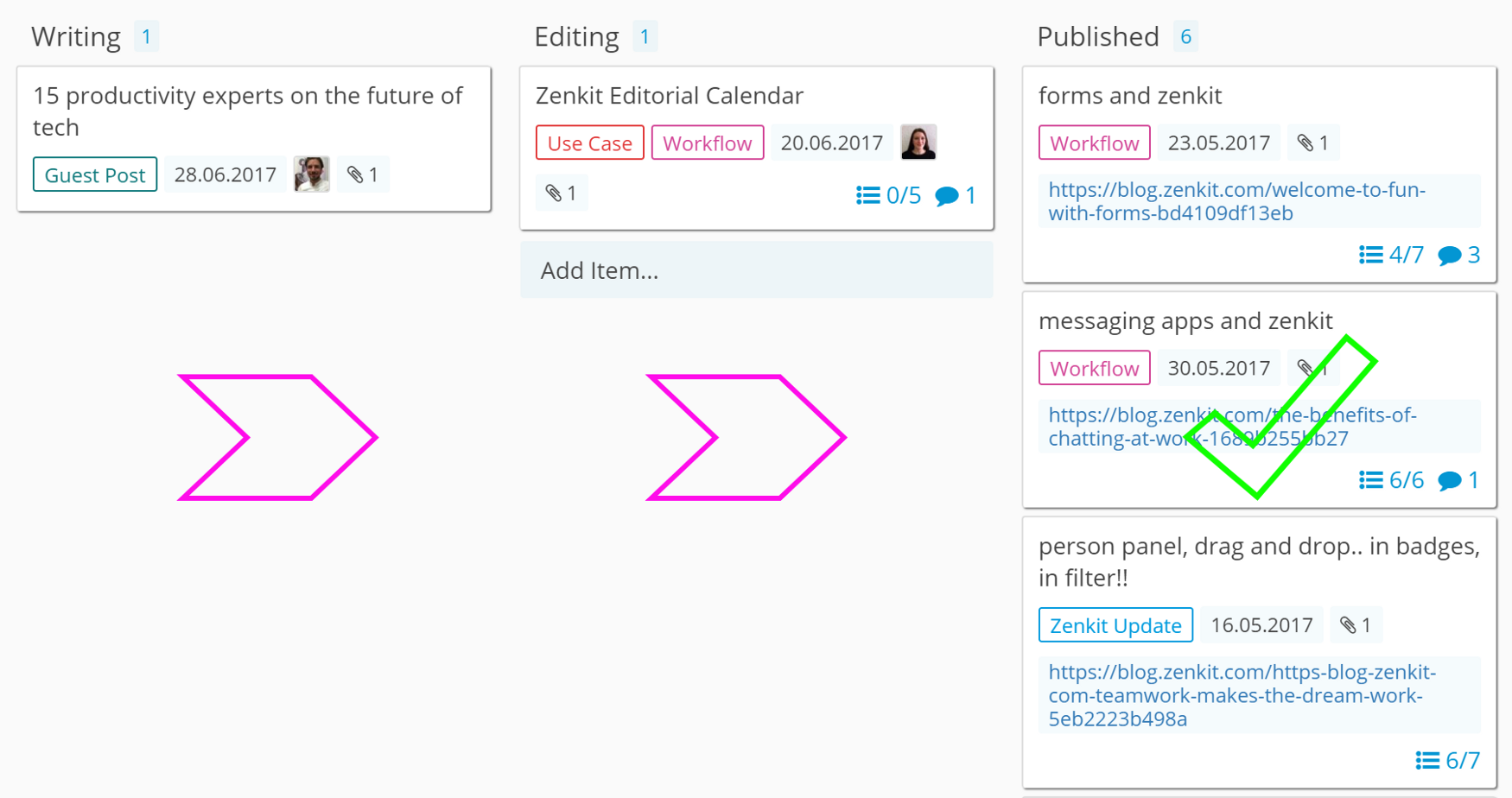
The best way to make sure everything stays on track is to create an editorial calendar. An editorial calendar is basically a way to track what you want to write, who writes it, when it should be published, where it needs to be shared, and much, much more. It should be intuitive to use and a great visual representation of your pipeline. Zenkit is perfect for editorial planning, we should know! It’s how we create our blog articles, videos, social media content, and more. Here’s how we use Zenkit to schedule and publish content:
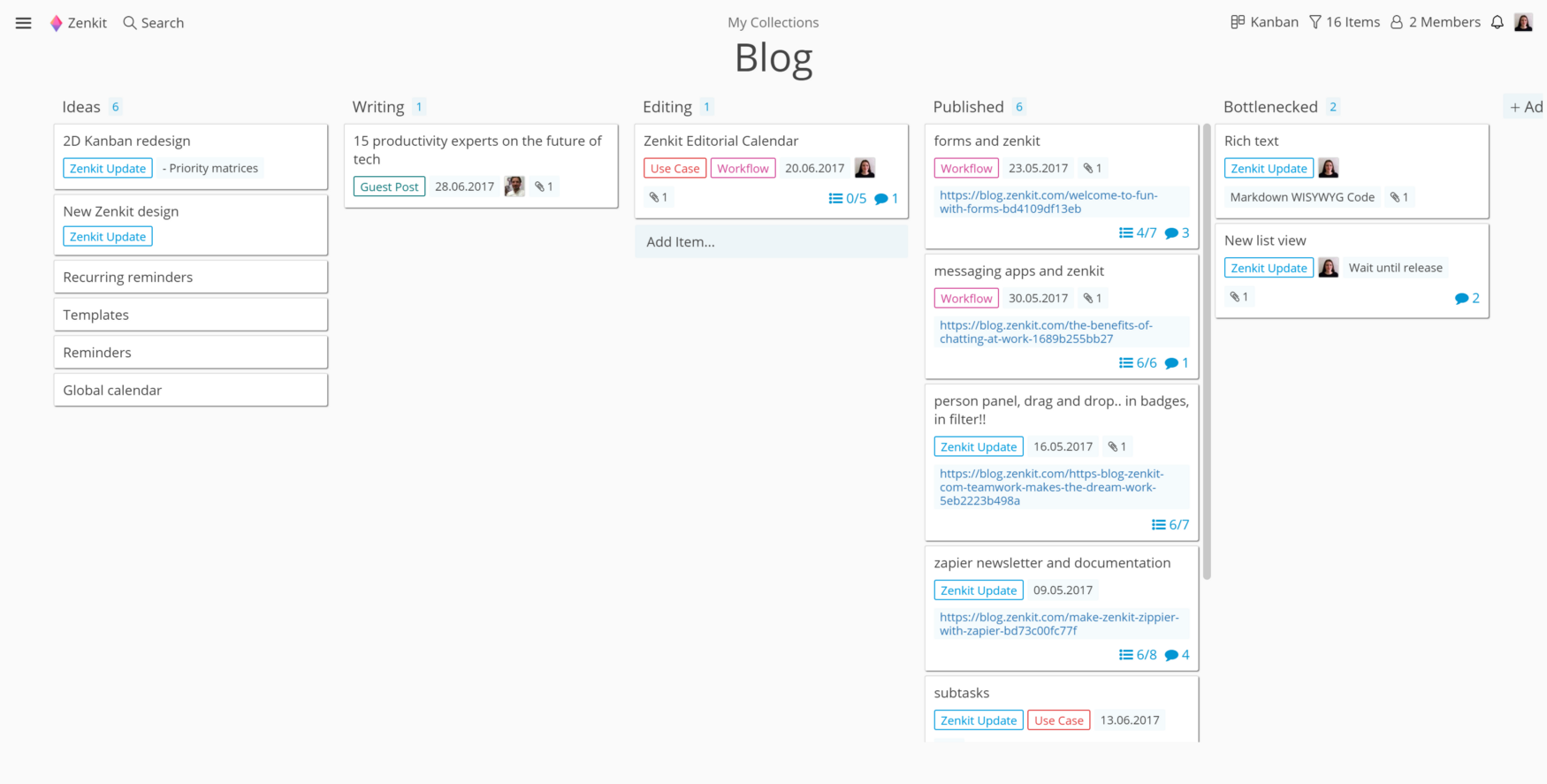
Fields We Use
One of the best things about Zenkit is the flexibility of the custom fields. Here are the fields we use to manage our blog. Luckily they’re not that much different from the standard fields that appear when you create a new collection!
We use a Progress label field to track the progress of a post:
- Ideas
- Writing
- Bottlenecked
- Editing
- Published
If you also regularly create graphic content or videos, you might need another label ‘Designing’ or ‘Filming’ (but if you create lots of videos, I’d set up a separate collection to manage video creation).
We also have a label field called Category to track the kind of article we’re writing.
An Assigned to member field helps us keep track of who’s responsible for the article.
The File field is used for writers to attach their Google Doc drafts of the article, and for our graphic designer (or Paint-happy writer) to attach hero images and screenshots.
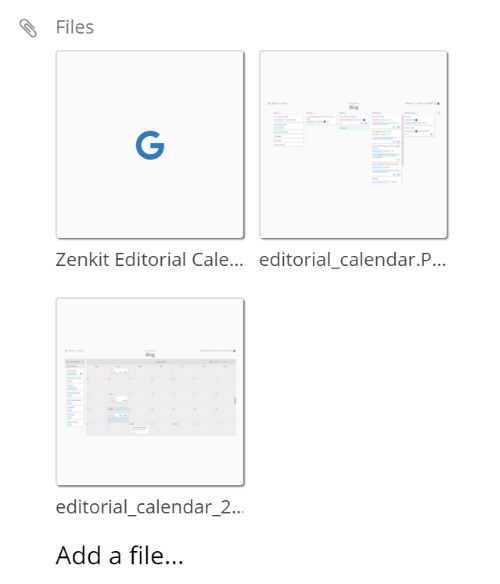
The Due Date field is pretty self-explanatory. The great thing about using it is that you can keep track of the history of your blog, and use the calendar view to easily schedule posts in advance. The writer or editor can also set up a reminder to ping them when the due date is coming up.
The Description field can be used to better describe the idea, propose publication dates, or brainstorm different titles.
Lastly, we add a Link field so that once the article’s published, we can always find it here.
Ideas
All Zenkit blog posts start out as ideas. Anyone on the team can add ideas to the list — it acts as a kind of ‘blog inbox’. Maybe one of our developers has been working on a particularly cool feature they want to be featured in a post. Maybe a customer service team member found a really interesting use case. Perhaps one of our managers is a productivity addict and has some great ideas about how to use Zenkit to increase productivity… It all goes in ideas.
Collaborating on ideas in this way is great, since everyone in the company can have their say, and often they will come up with exciting ideas that you’d never come up with yourself. It’s a steady drip of inspiration from people who care just as much as we do 🙂
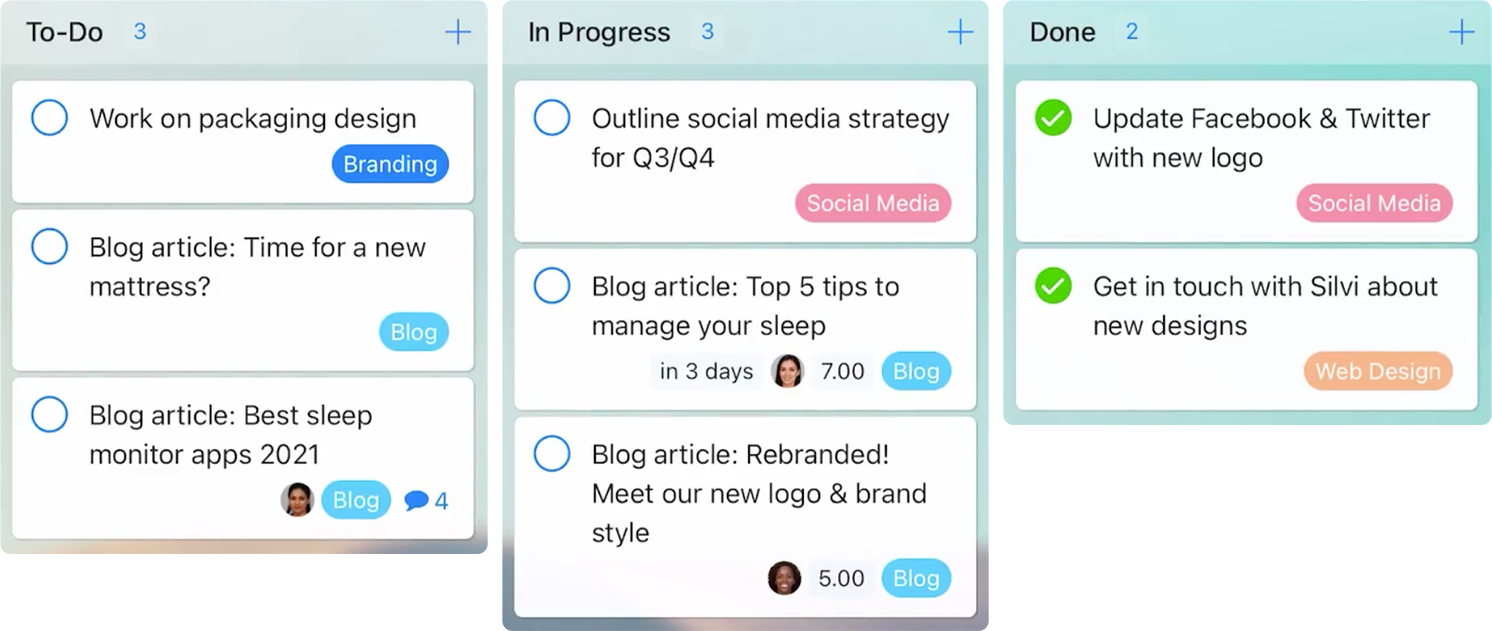
Simplify your project communication and task management with our user-friendly project management software.
Sign up for free today!
To-Do
Posts get dragged into this list when we’ve decided they should be written. A writer assigns themselves and they can begin researching the topic. We add a due date at this stage, so the writer knows how long they’ve got to get it done. The easiest way to do this is to switch to calendar view, then drag and drop the article from the ‘Unscheduled’ list onto the calendar.
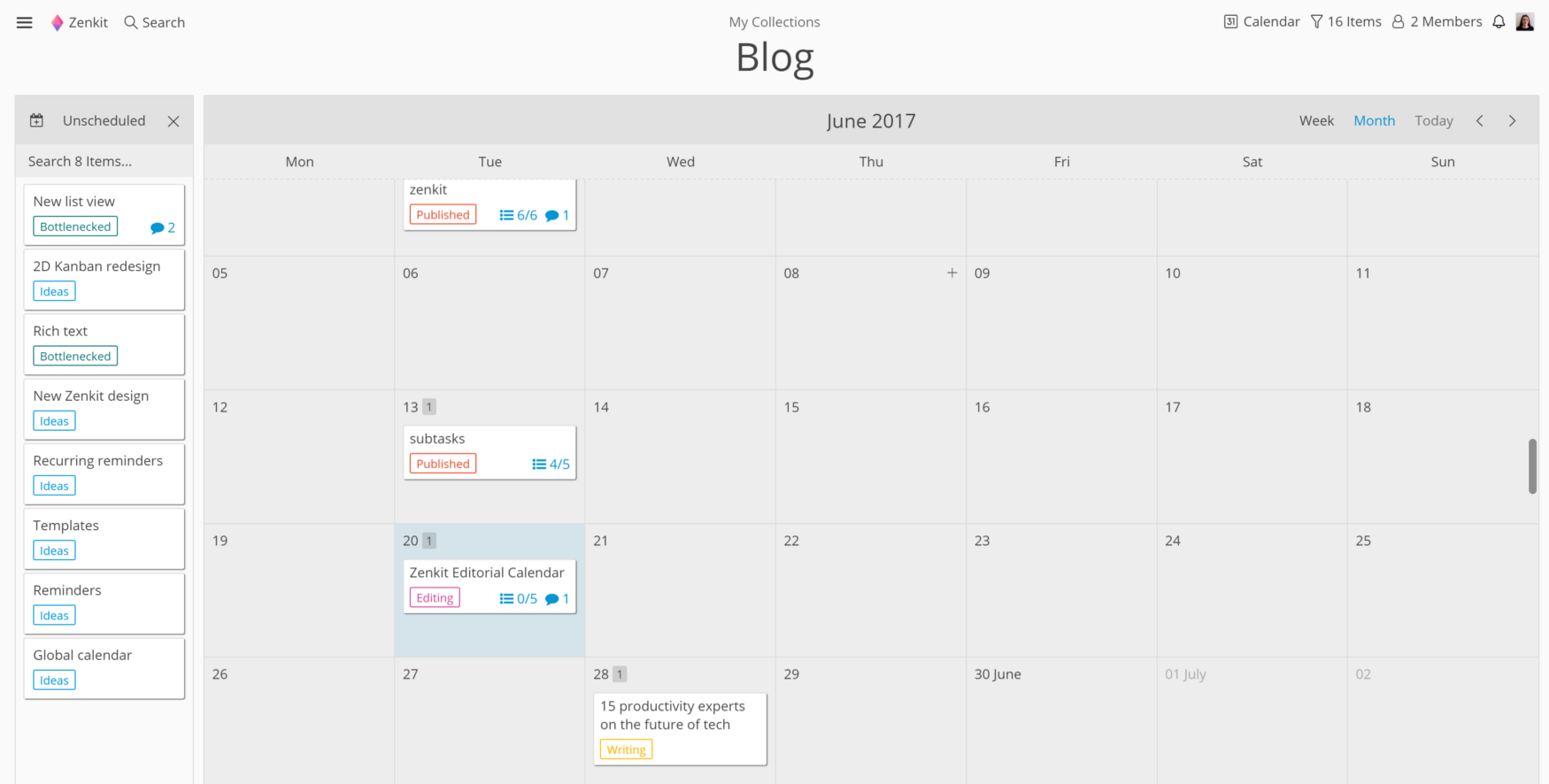
At the moment we’re keeping things easy, churning out a blog article a week on Tuesdays, and producing guest blogs and videos whenever needed. However, this editorial calendar can be scaled right up to match any volume of content you create!
Writing
Once someone starts writing the article, the item gets dragged over to this list. They attach the Google Doc they’re writing it on into the file field so everyone can see how it’s coming along, and they can also add any images they create for the article so that the editor can check those over too.
Bottlenecked
Sometimes blog articles need to be put on hold when, inevitably, life gets in the way. This is totally normal — we’re not robots on a production line! When there’s a delay (whether in writing or in editing), we move the item to the ‘Bottlenecked’ list. Once some time clears up, we can pick up right where we left off.
Editing
A second person is assigned to the item to look over the writer’s work. They may discuss the article and suggest changes in the comments, or they might just go ahead and publish it. The editor is in charge of making sure the formatting works, that the pictures are in the right place, and that the right tags are applied on the blog. They’re also in charge of hitting ‘publish’.
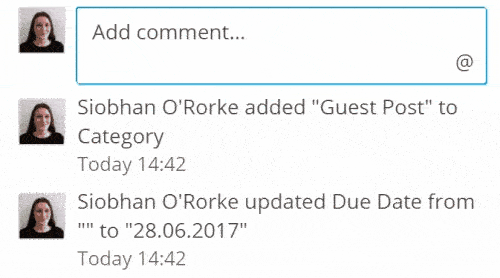
We also add a checklist to manage promotion across our social media accounts and in our newsletter.
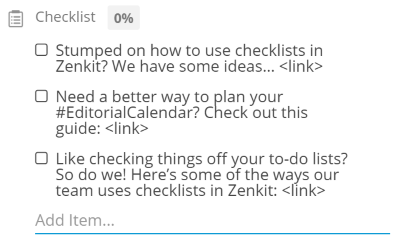
Published
Ahh! That magical moment when all of your collective hard work goes live. Once the article is published on the blog, the editor drags it across to the ‘Published’ list, and it’s done!
Update: You can now download a template of this editorial calendar! Find it here: https://zenkit.com/templates
Final Thoughts
There you have it. We use this collection to create everything from blog posts to videos, to website text, and even guest posts on other sites. How do you organize your projects with Zenkit? Think we missed something? Let us know with our blog feedback form, or in the comments below!
Cheers,
Siobhan and the Zenkit Team

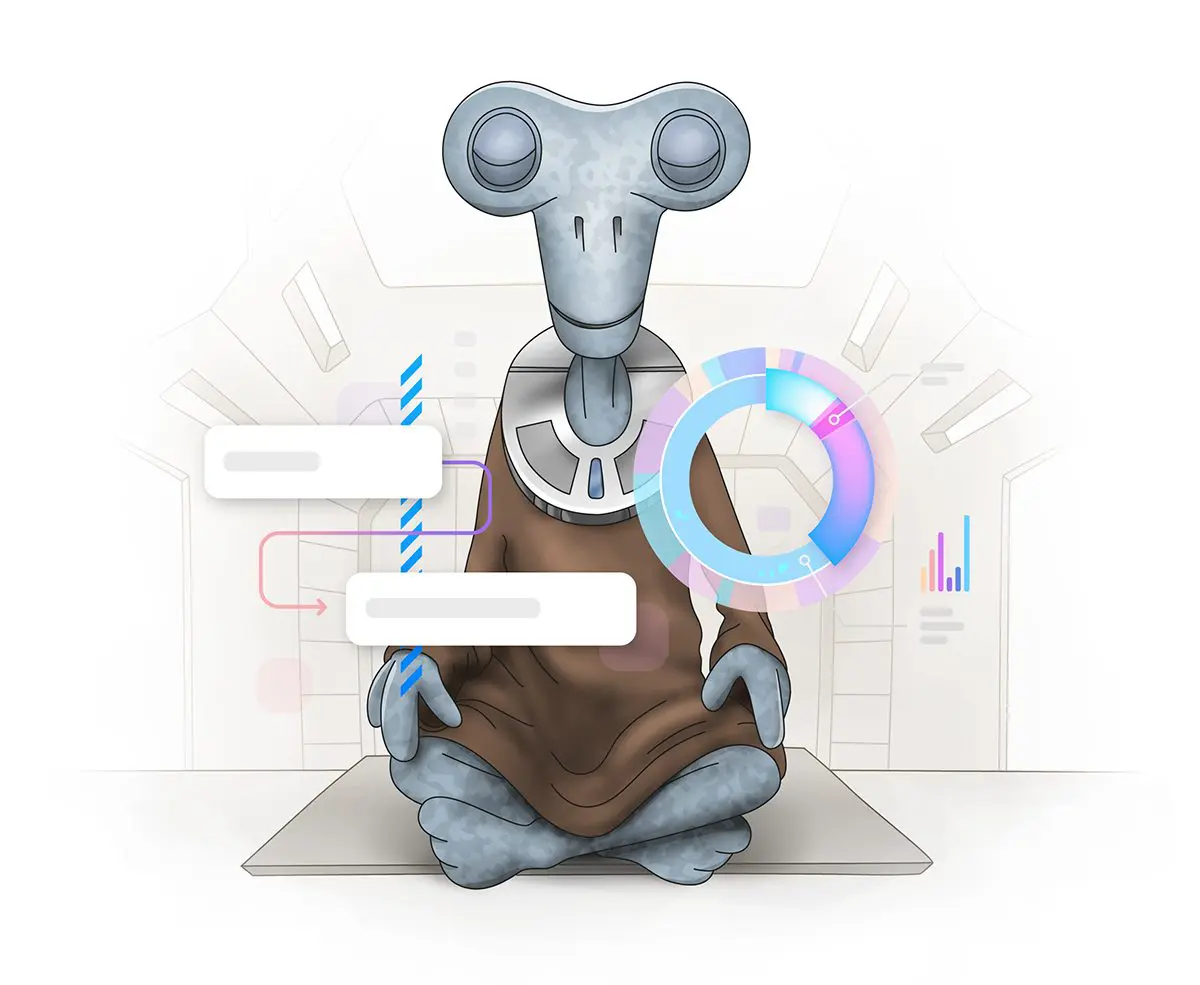

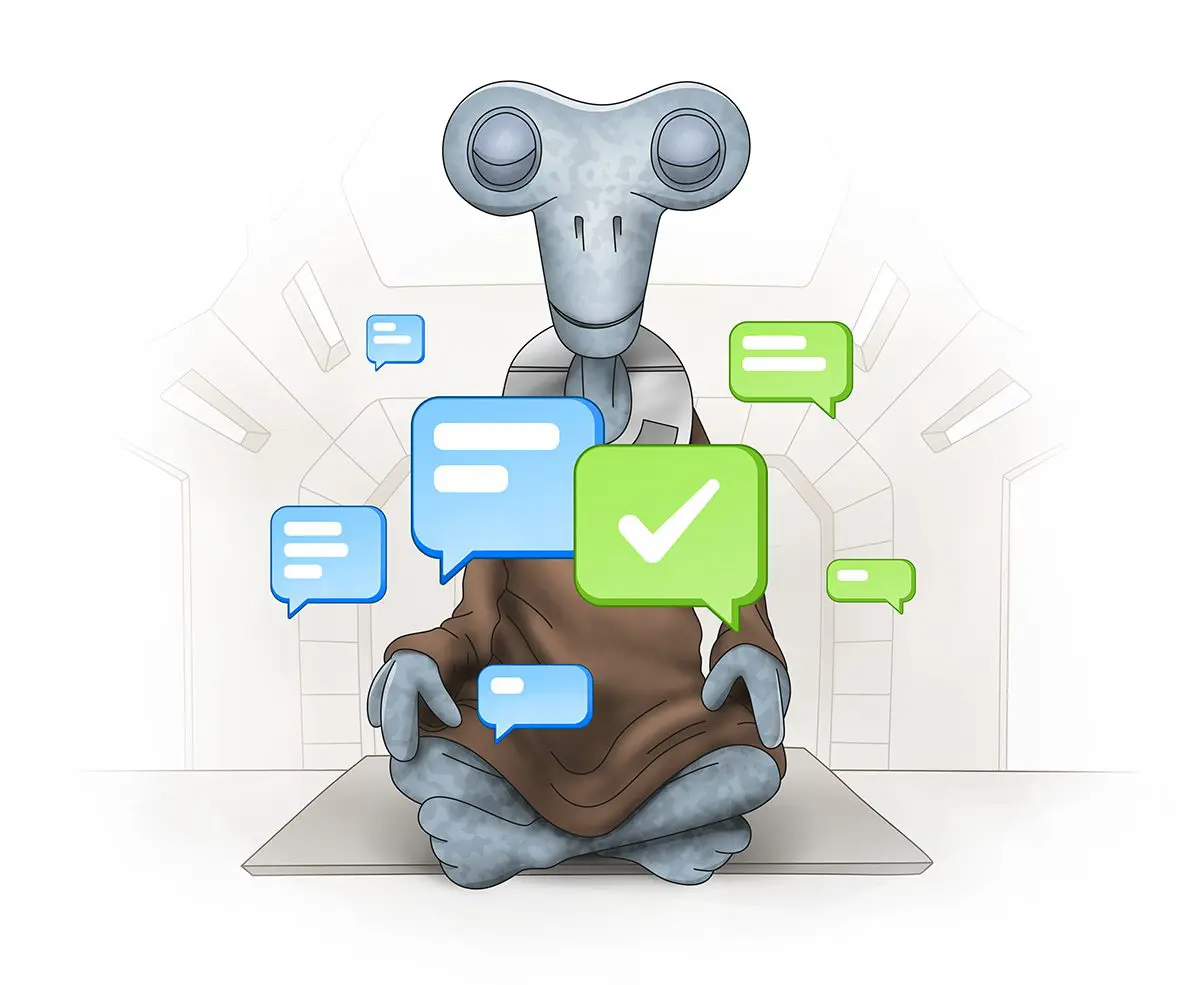

Leave a Reply